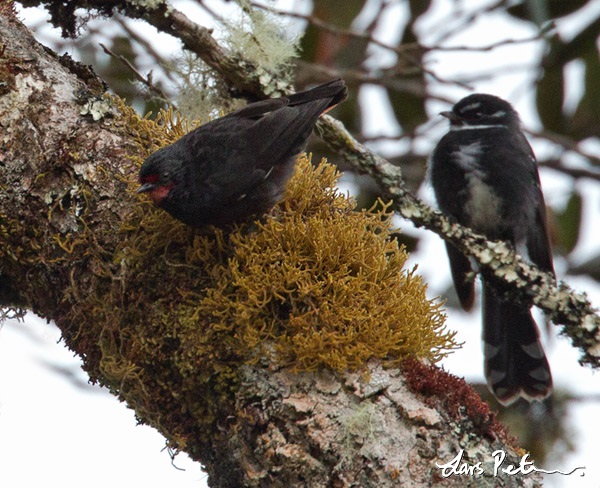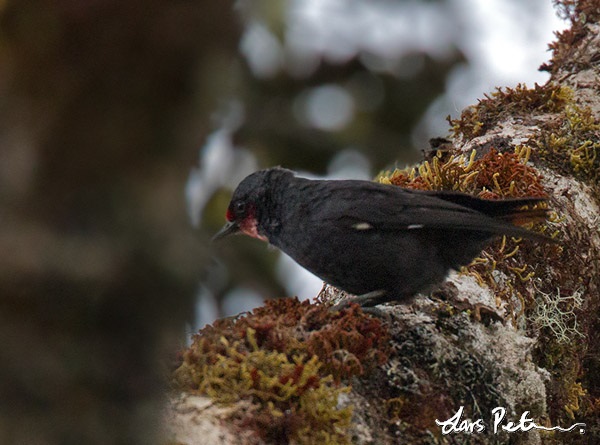
Daphoenositta miranda
SUBFAMILY
Neosittinae
TAXONOMY
Daphoenositta miranda De Vis, 1897.
OTHER COMMON NAMES
English: Pink-faced sittella; French: Nйositte noire; German:
Prachtkleiber; Spanish: Sita de Cara Rosada.
PHYSICAL CHARACTERISTICS
4.3 in (11 cm), with a short tail, a black body, and red-pink
face and tip of tail.
DISTRIBUTION
Occurs in New Guinea.
HABITAT
Occurs in mossy cloud forest at altitudes of 6,600–11,800 ft
(2,000–3,600 m) or higher.
BEHAVIOR
Occurs as pairs or in small flocks. Does not migrate. Like
nuthatches, it will clamber head-downwards on tree trunks.
The song is a faint series of squeaky notes.
FEEDING ECOLOGY AND DIET
Gleans invertebrates from tree branches and foliage and also
eats fruits.
REPRODUCTIVE BIOLOGY
Builds a deep cup-shaped nest on a lichen-covered branch
(rather than nesting in tree or rock cavities like other members
of the Sittidae). The nest consists of spider and cocoon silk,
with pieces of bark to camouflage the exterior. There are usually
three eggs, which are similar in color to the lichens near
the nest. Cooperative breeding occurs, in which not only the
parents take part in nest building and the feeding of the young,
but also other individuals. The “helpers” are likely close relatives,
such as non-breeding young or siblings of the breeding
pair.
CONSERVATION STATUS
An uncommon species but not listed as threatened.
SIGNIFICANCE TO HUMANS
None known.
Other popular Animals
Photo Gallery of - Black sittella




 Animalia Life
Animalia Life